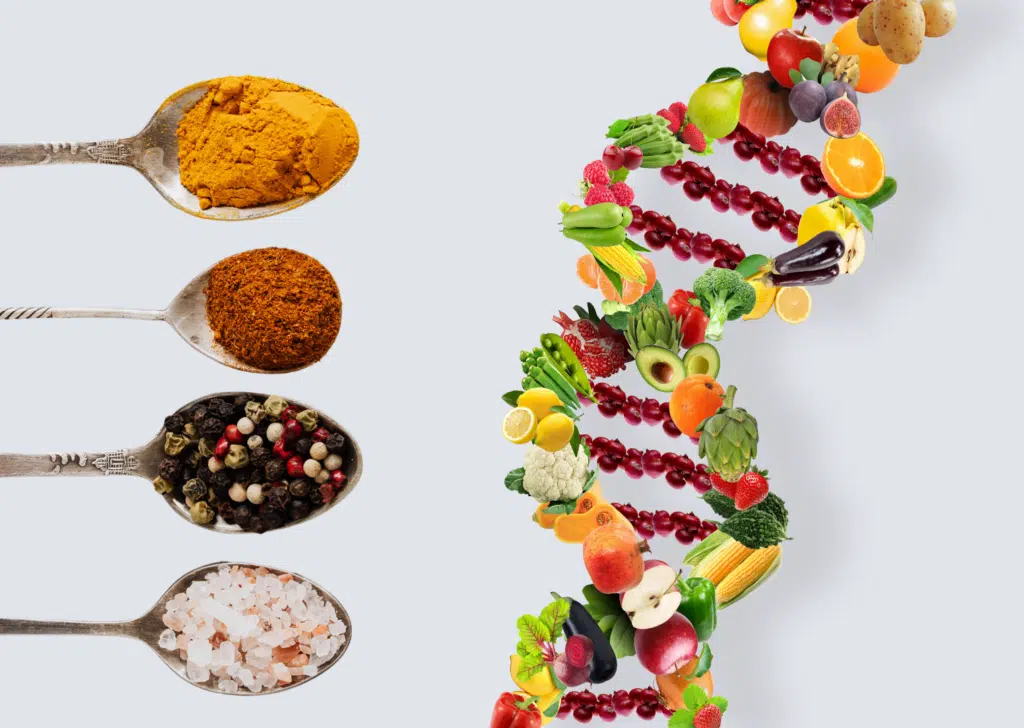Whether we’re lounging on the couch all day, lifting weights, or running a marathon, our body needs energy. But how do we turn food into fuel for our activities, and what happens in your body when you exercise? Find out here.
Food as an Energy Source
As soon as we start eating, the body begins converting food into energy, which we need for basic bodily functions like regulating body temperature, as well as for physical activities.
The body breaks down food during digestion into its components: glucose (from carbohydrates), amino acids (from proteins), and fatty acids (from fats). These are then converted into the universal energy carrier ATP (adenosine triphosphate), which our body uses to provide energy.
Depending on the type of exercise, specifically the duration and intensity of the activity, our body obtains the necessary energy (ATP) from different sources or metabolic processes. These processes can be broadly divided into anaerobic (without oxygen) and aerobic (with oxygen) energy production.
Anaerobic Energy Production
Creatine Kinase (0-10s)
For short but very intense activities (approximately 0-10 seconds), the body relies on small ATP stores in the muscles and creatine phosphate. Creatine is produced in the liver and transported to the muscles via the bloodstream. This process does not require oxygen, allowing the body to provide energy quickly but only for a short period. Activities that use this system include weightlifting, throwing, jumping, sprints, or simply lifting a box. In short, anything that requires quick and powerful exertion in a short time.
Anaerobic Glycolysis (Carbohydrates / 10-90s)
Next (10-90 seconds), the body derives energy from carbohydrates, specifically their storage form (glycogen). We obtain carbohydrates from foods like rice, potatoes, pasta, or oats. The process of converting glycogen into ATP is called glycolysis. For activities lasting 10-90 seconds with high effort, the body uses anaerobic glycolysis (ATP production without oxygen). The advantage of this system is that energy is provided quickly, but only for a short period. Lactic acid is a byproduct of this process, associated with fatigue during exercise.
Brief Note on Lactate:
Lactate is lactic acid produced during certain metabolic processes, especially during intense physical exertion. Lactate is not responsible for the burning sensation noticed during intense exercise. Instead, high-intensity training produces H+ ions, which lead to acidification. However, lactate concentration in the blood is a good indicator of fatigue but not its cause.
Examples of activities predominantly using anaerobic glycolysis for energy include High-Intensity Interval Training (HIIT), hockey, or 400m sprints.
Aerobic Energy Production
Aerobic Glycolysis (Carbohydrates) (from ~3min)
For activities lasting around 3 minutes or more, glycolysis uses oxygen to produce ATP. This energy production method takes longer since oxygen needs to be transported from the lungs to the muscles.
The advantage is that energy is provided more slowly but can be sustained over a longer period. The drawback is that eventually, our carbohydrate (glycogen) stores deplete, necessitating a reduction in exercise intensity.
The body primarily derives ATP from this system during team sports like soccer, basketball, rugby, or individual sports like swimming, cycling, or tennis.
Lipolysis (Fats)
As exercise duration increases and glycogen stores are depleted, the body uses fat reserves in a process called lipolysis, with the addition of oxygen. Producing ATP from fats takes a long time, meaning this energy system supports primarily low-intensity activities over extended periods. The advantage is that fat reserves are virtually inexhaustible, allowing prolonged exercise.
It’s important to note that energy production never relies solely on one system but operates in parallel. The predominant metabolic process contributing to energy production depends significantly on the sport, specifically the duration and intensity of the activity.
What About Proteins?
One might think proteins are not a part of metabolism. The body typically resorts to proteins only in special situations when other energy sources are exhausted, such as during diets with a large caloric deficit. In such cases, the body uses the proteins that make up our muscles for energy, leading to muscle loss and decreased strength.
Practical Advice for Your Training
Whether you’re into strength training or endurance sports, training in different energy production areas offers benefits you can use. If you usually do strength training and add endurance workouts to your weekly routine, it can improve your performance in strength training (e.g., allowing you to perform more repetitions or exercises). If you’re more focused on endurance, incorporating strength training once or twice a week can enhance your performance and minimize injury risk. Training across different metabolic areas helps prevent one-sided strain and develop a balanced athletic profile.
Enjoy your training!
Why a healthy diet is crucial in everyday working life
Discover how a balanced diet not only keeps your body fit, but also your mental health. Get tips on how you can eat better at work!
Epigenetics and Nutrition: How Diet Affects Your Health
Are you curious about how your eating habits can change not only your body but also your genes? Find out more about the benefits of epigenetic nutrition and how to implement the diet. Epigenetics and Nutrition: understanding the connection Our DNA consists of up to 25,000 genes. These genes are essentially the blueprint for our […]
What exactly is health?
When we are ill, we wish you a speedy recovery; for your birthday and the New Year, we wish you good health. But what exactly does the term “health” actually mean? At what point are we considered healthy or sick, and what influences our health? Find out in this article.







